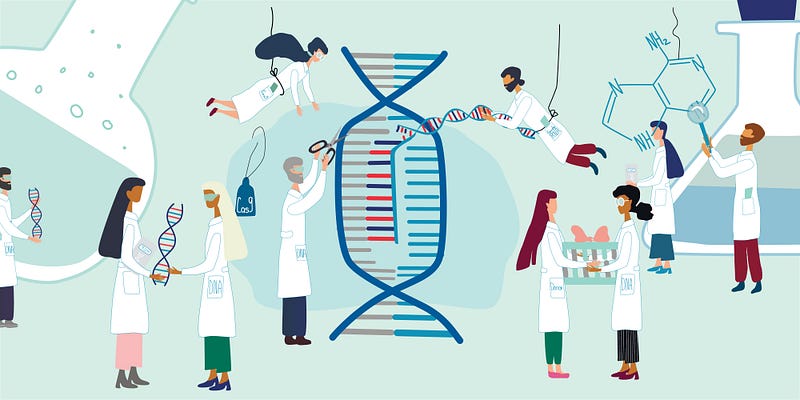Cutting Away at the Details: How CRISPR Cas-9 Revolutionized Science
By Gabrielle Hernandez, Biochemistry, 2022

Within a decade, the origins of CRISPR Cas-9 were recognized in three different parts of the world. In Japan, the repeated sequence was seen in Gram-negative bacteria; and then again in the Netherlands, in Gram-positive bacteria. Gram-positive/negative are two categories of bacteria describing the makeup of the cell wall and tested via Gram-staining (the former stains purple and the latter stains red or pink). In the salt marshes of Santa Pola, Spain, Dr. Francisco Mojica recognized the same repeats in the thriving archaea. Mojica, despite challenges in funding and lack of sophisticated sequencing technology, linked these repetitions, coined short regularly spaced repeats (SRSR), to other microbes and eventually hypothesized that the mechanism was involved in the microbes’ adaptive immune systems. It wouldn’t be until 2002 that the technology was bestowed the name CRISPR (clustered regularly interspaced palindromic repeats). Three journals rejected Mojica’s work, ironically citing a lack of importance, but nevertheless, he published his report and contributed to one of the fastest growing biomedical technologies of the century.
Three journals rejected Mojica’s work, ironically citing a lack of importance, but nevertheless, he published his report and it contributed to one of the fastest growing biomedical technologies of the twenty-first century.
Since its discovery, CRISPR Cas-9 technology has expanded beyond its humble beginnings. Near Northeastern University, numerous companies in Cambridge boast revolutionary genetic research using CRISPR Cas-9. One of CRISPR Therapeutics’ projects involves gene editing stem cells to replace beta-cells in type I diabetes patients. The Broad Institute, another neighboring group, has used CRISPR to screen for sites in the genome that are resistant to cancer drugs.
The opportunities are endless with such a promising new technology. However, as with most scientific discovery, CRISPR has not escaped controversy.
However, as with most scientific discoveries, CRISPR hasn’t escaped controversy. Many have promised that CRISPR will solve the world’s food crisis caused by overpopulation and climate change, but with current genetically-modified foods being so heavily regulated, it’s unlikely that CRISPR-modified foods will receive elevated treatment. The Non-GMO Project, and other anti-GMO advocates, successfully pushed the federal government to instate GMO-labeling on all commercial food products. Furthermore, when the news broke that a Chinese scientist, Dr. He Jiankui, genetically modified the embryonic genes of a set of twins, scientists and the public alike were outraged at this breach of research ethics. This brought into question the ethics of CRISPR technology and the age-old question of whether or not scientists are “playing God.”
Despite the controversy, Mojica’s initial discovery still holds strong promise for the future. From sustained interest from researchers, companies, and the public, CRISPR could be the answer to age-old scientific inquiries, such as curing genetic diseases and producing more food for an ever-growing population.
DOI: 10.1016/j.cell.2015.12.041
DOI: 10.1007/s00239–004–0046–3
DOI: 10.1046/j.1365–2958.2002.02839.x
DOI: 10.1056/NEJMcibr1905048
DOI: 10.2527/jas.2014–8124